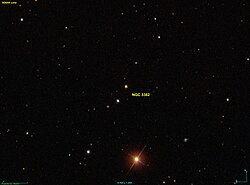The topic of this article may not meet Wikipedia's notability guideline for astronomical objects .(May 2025) |
| Observation data Epoch J2000.0 Equinox J2000.0 (ICRS) | |
|---|---|
| Constellation | Leo Minor |
| Right ascension | 10h 48m 25.0s [1] |
| Declination | +36° 43′ 32″ [1] |
| Other designations | |
| NGC 3382 | |

NGC 3382 is the name for two stars in the constellation Leo Minor. The object was discovered on April 5, 1874, by the Irish astronomer Lawrence Parsons. [2]